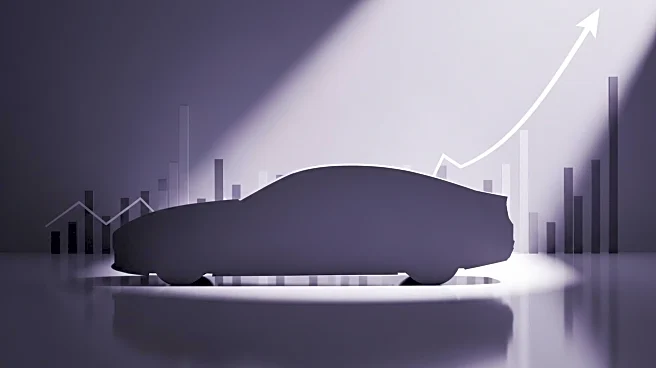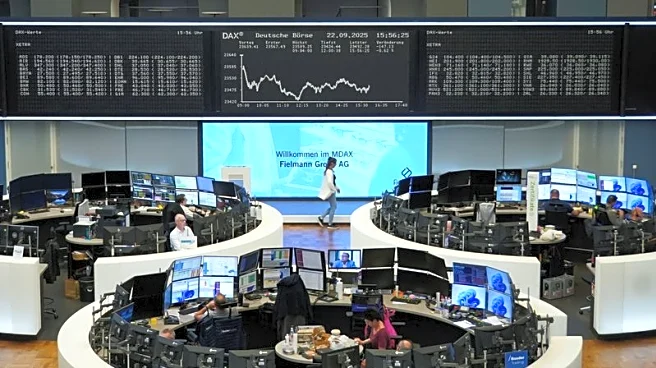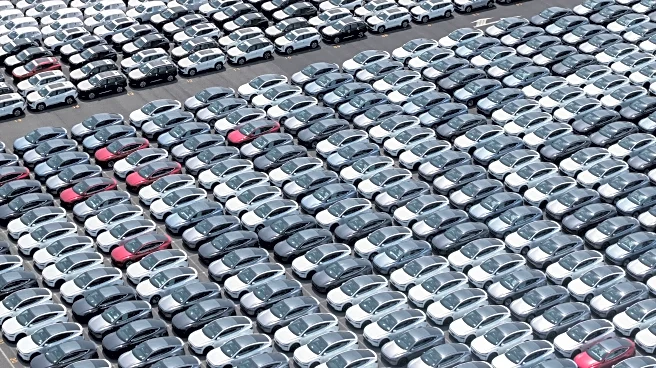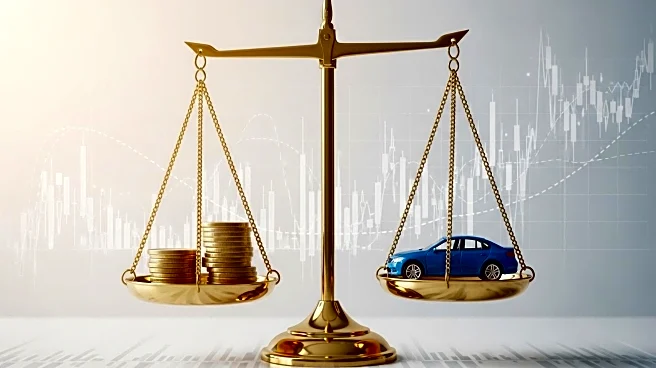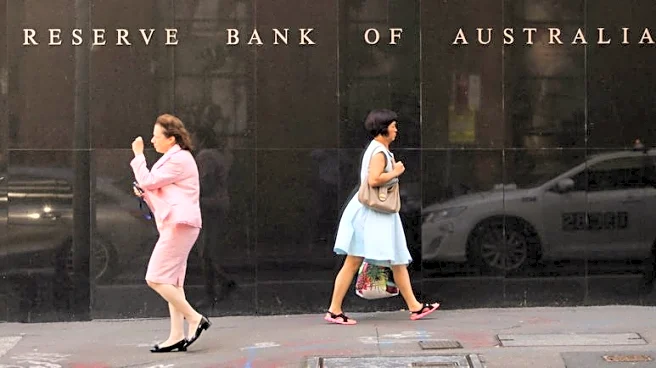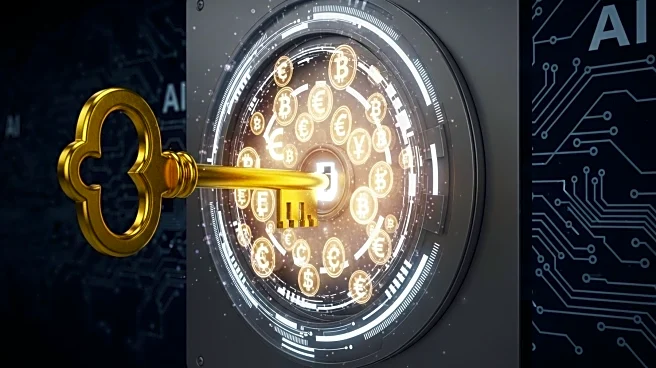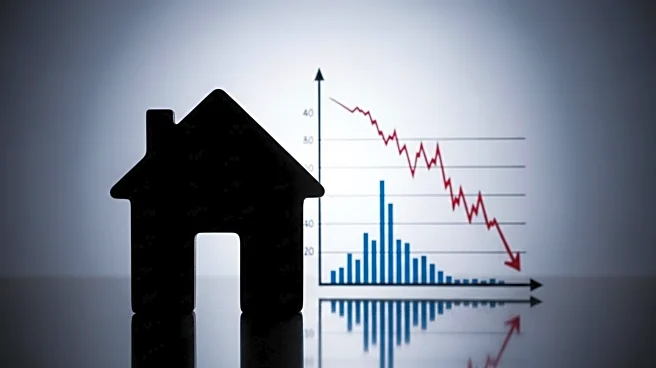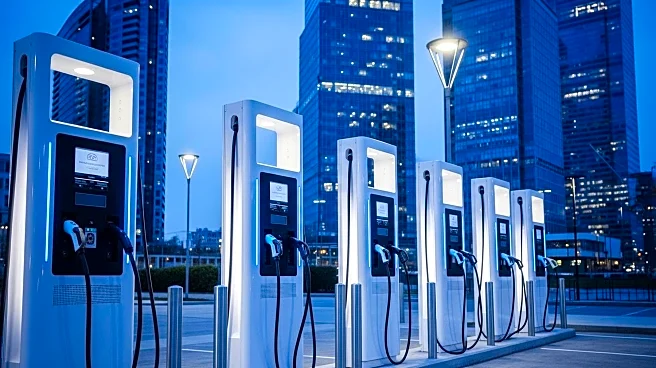What's Happening?
The automotive industry is experiencing a significant shift as the average price for new vehicles has surpassed $50,000 for the first time, according to Cox Automotive's Kelley Blue Book. This price surge is occurring alongside a rise in auto loan delinquencies, particularly among subprime borrowers with FICO scores below 620. The average new auto loan rate is approximately 9%, with subprime rates reaching 18% to 20%. Fitch Ratings reports that 6.43% of subprime auto loans were at least 60 days past due in August, nearing a record high. The Consumer Federation of America has highlighted the strain on U.S. auto financing, noting that Americans owe over $1.66 trillion in auto debt.
Why It's Important?
The current trends in the automotive industry reflect broader economic disparities, often described as a 'K-shaped' economy. Wealthier consumers continue to purchase new vehicles, benefiting from favorable credit conditions, while lower-income individuals face financial challenges exacerbated by rising inflation and tighter budgets. This situation underscores the growing economic divide, where affluent households drive market demand, leaving price-conscious buyers to opt for used vehicles or avoid purchases altogether. The increasing auto loan delinquencies among subprime borrowers could signal potential risks for financial institutions and the broader economy.
What's Next?
As the automotive market continues to evolve, stakeholders may need to address affordability concerns and the impact of rising loan delinquencies. Financial institutions might tighten lending criteria, affecting subprime borrowers further. Policymakers could consider interventions to support lower-income consumers, potentially through incentives for purchasing affordable vehicles or restructuring loan terms. The industry may also see shifts in consumer preferences, with more individuals turning to used cars or alternative transportation options.
Beyond the Headlines
The current dynamics in the auto industry may have long-term implications for economic inequality and consumer behavior. The 'K-shaped' economy could lead to increased scrutiny of lending practices and calls for regulatory changes to protect vulnerable borrowers. Additionally, the focus on high-end vehicle sales might drive innovation in luxury automotive features, while affordable vehicle options could become less prioritized, impacting market diversity.
